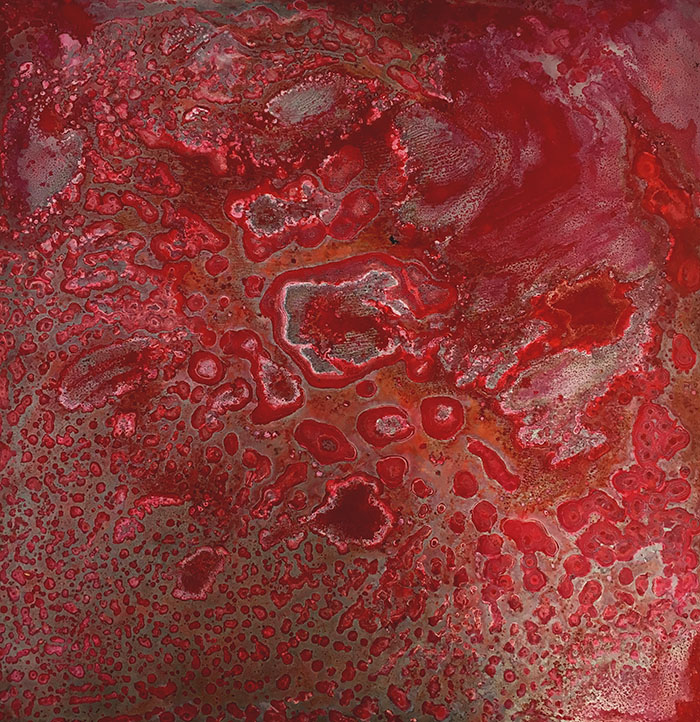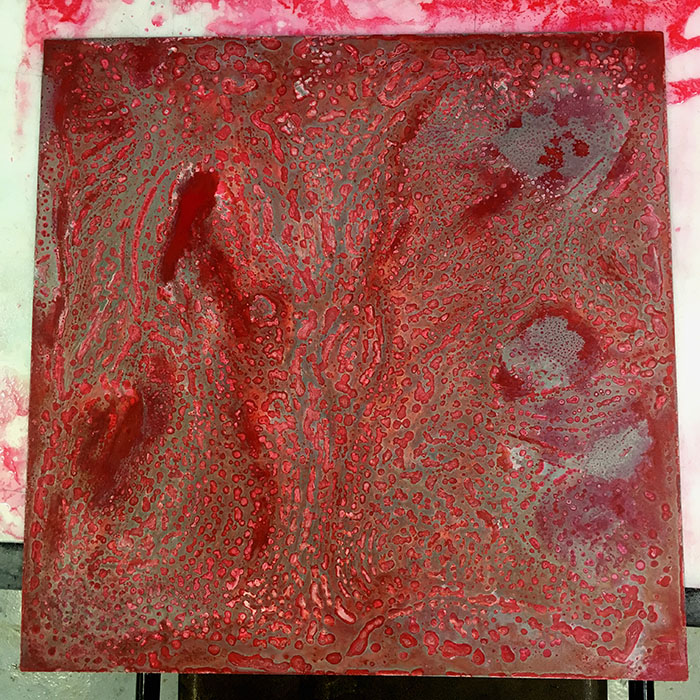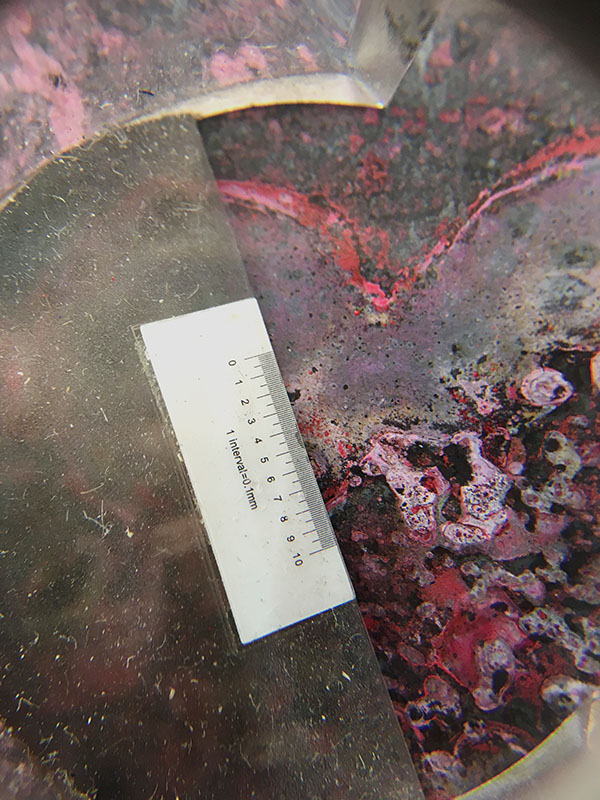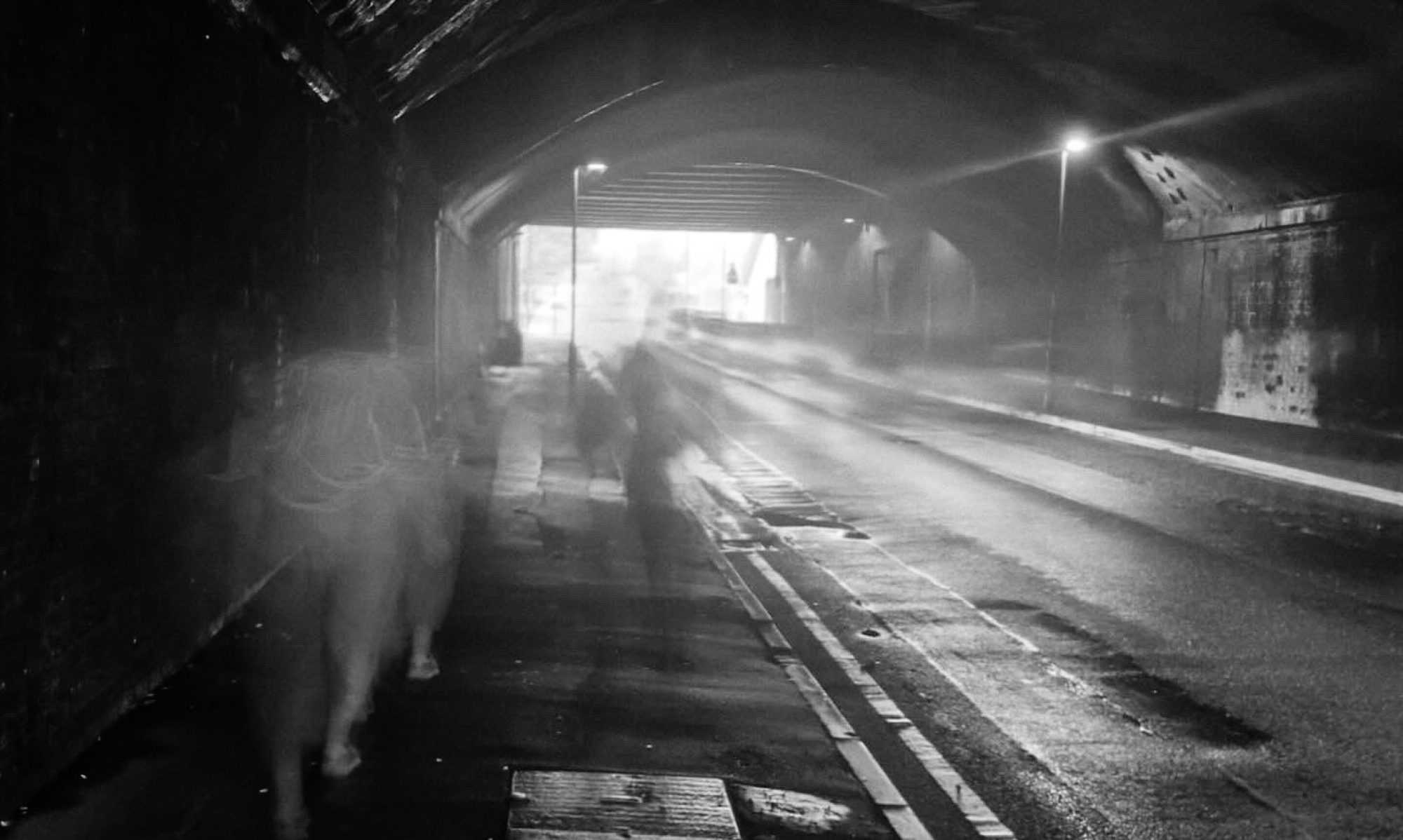I am so excited to be experimenting with Multiplicity, Soft-ground and Stop Start Etching.
In my last blog post, I spoke about the difficulties in forming a conversation between the marks that were present on the plate. To me, the etch was shouting over the natural striations and oxidisation that I was encouraging to form. Resolved to take an active approach to mark making. Utilising soft-ground, Lascaux varnish, impure water and a pertinent quotation from A Thousand Plateaus I began to experiment.

‘Language is, in Weinreich’s words, “an essentially heterogeneous reality.” There is no mother tongue, only a power takeover by a dominant language within a political multiplicity. Language stabilises around a parish, a bishopric, a capital. It forms a bulb. It evolves by subterranean stems and flows, along river valleys or train tracks; it spreads like a patch of oil.’ – A Thousand Plateaus

Taking this quote as an approximate instruction I flooded the plate with impure water giving the soft-ground the autonomy to flow in ‘river valleys, or train-tracks’ created in the first experiments. The soft-ground adhered to the striations that were already apparent on the plate and settled in their own subterranean stems and flows.
Heating the plate on a hot plate quickly set the ground and evaporated any excess moisture; leaving a dramatic ground.
Using a Lascaux heavy soft-ground I ensured that the soft-ground could tolerate being diluted, heated and etched.

I started this experiment by etching each plate for five minutes in freshly mixed copper sulphate. Each etch lasted for five minutes and was followed by carefully cleaning the plate. This process was repeated four times, giving an over all etch of twenty minutes in a keen solution. After proofing each plate it is clear that my rhizome has enveloped the plate and encompassed the language. I have now dominated the conversation and taken it in a new direction.
